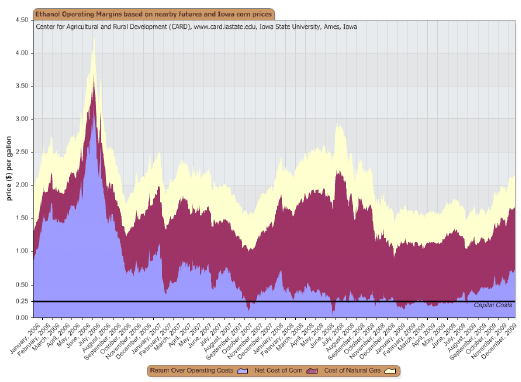



CME: Can Firms’ Behaviour Be Made More Competitive?
US - A decision handed down yesterday by the Fifth Circuit Court of Appeals in New Orleans once again affirmed that the Packers and Stockyards Act of 1921 (PSA) is primarily about competition in the markets for livestock and meat, write Steve Meyer and Len Steiner in their Daily Livestock Report (DLR) for 15 December.It is an important decision that clarifies the PSA and its scope after Congress in recent years has made poultry and swine contractors (that is, companies or individuals that own birds or pigs that are grown under contractual arrangements with growers) subject to the PSA. The plaintiffs likely realised they were in trouble while reading the first sentence: “Once again a federal court is called to say that the purpose of the Packers and Stockyards Act of 1921 is to protect competition and, therefore, only those practices that will likely affect competition adversely violate the Act. That is this holding.” There was more but you get the gist pretty quickly.
The decision dealt with the case of Wheeler vs. Pilgrim’s Pride which alleged unfair dealing by Pilgrim’s when it offered different contract terms to different growers. The plaintiffs charged that Pilgrim’s actions violated Section 202 of the PSA which bars undue preferences, unfair and deceptive trade practices. A lower court had held for the plaintiff, claiming that the defendant’s practices did not have to harm competition to be a violation of the PSA and awarded damages of $164,000. Pilgrim’s appealed and the appeal finally found its way to the entire Fifth Circuit panel, which issued today’s decision. The decision cited a long history of decisions by various Circuit Courts and the Supreme Court that have consistently held that Section 202 applies to unfair or deceptive practices only if those practices lead to a lessening of competition for livestock and meat. These decisions and the original report language from Congress again led this court to leave the Act about competition, not practices per se.
The decision and its timing are interesting in that USDA and the Department of Justice are preparing for a series of “competition workshops” next year to look at competitive conditions in everything from seed and chemical markets to dairy, poultry, livestock and, eventually, farm to retail spreads or marketing margins. A forum last week sponsored by the Farm Foundation did a good job of providing the state of knowledge on most of these issues but the big question generally boils down to this: Are we better off with some small amounts of market power and large, very efficient companies or with no market power and smaller, less efficient companies? The real question may end up being whether firms’ behavior can be made more competitive while still capturing the efficiencies that come with size. Stay tuned for more as the workshops play out next year.
A major reason for the continuing rebounds of corn prices is that ethanol plants are making money — better money than they have made in about two years. The chart below comes from Iowa State University’s Center for Agricultural and Rural Development (CARD) and shows the amounts that ethanol producers spend for corn (the maroon area) and other cash costs which include natural gas (the buff colored area). The blue area represents margins above all cash costs or gross margin that must cover fixed costs before providing a true profit. The horizontal line at $0.25/gallon represents CARD’s estimate of fixed costs, meaning that the plants are in the black by about $0.25/ gallon at present, the highest level since mid- 2007.

Positive margins suggest that ethanol output and thus corn usage for ethanol will rise as long as plant capacities are underutilized — which is true to the tune of just over 1.2 billion gallons according to the Renewable Fuels Association. The challenge, of course, is selling more ethanol if it represents only 10 per cent of every gallon of fuel and if products containing more ethanol (primarily E85) are still facing distribution limitations due to fuel retailers having no available pumps. The lagging pace of adoption of flex-fuel vehicles hasn’t helped much either. Even if no more ethanol is made and no more corn is used, positive margins mean ethanol plants can pay more for corn if they need to do so. Thus, the downside for corn prices appears limited by the values of ethanol and gasoline and oil.











